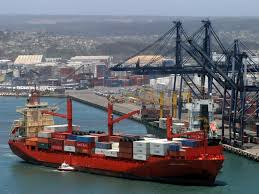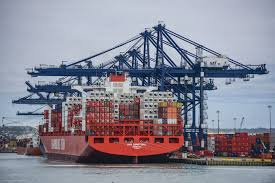History Puerto San Antonio

History Puerto San Antonio
The History of the San Antonio Port in Chile
Origins: Early Beginnings
The foundation of San Antonio Port can be traced back to the early 20th century.
Located on the central coast of Chile, the area was recognized for its natural harboring qualities, making it an ideal location for maritime activities.
Before its establishment as a formal port, the coastline was frequented by small fishing boats and some trading vessels.
Economic Necessity: Rise to Importance
During the early 1900s, Chile experienced significant economic growth, with a rising need to export its resources, particularly minerals and agricultural products.
The central region, abundant in these resources, required a maritime outlet for international trade. Recognizing the potential, the government initiated the development of the San Antonio Port to cater to this growing economic demand.
Growth and Development: Expansion Phases
Over the decades, San Antonio underwent multiple expansion phases. As trade volumes surged, the port authorities realized the necessity to expand its facilities and infrastructure to handle larger vessels and increased cargo.
1920s-1940s: Initial phases of dock and warehouse constructions began. The port started to see a rise in cargo movement, especially in exports like copper, fruits, and wine.
1950s-1970s: This period marked significant investments in port infrastructure, including the addition of new berths and modernized equipment.
San Antonio started receiving international attention, becoming a primary hub for exports from the central region of Chile.

1980s-2000s: Technological advancements were incorporated into port operations. Automated systems, larger cranes, and state-of-the-art machinery were introduced.
The port also began diversifying its services, offering more than just cargo handling.
Facing Challenges: Natural Disasters and Economic Shifts
Like many regions in Chile, San Antonio was not immune to the country’s seismic activity.
Over the years, the port has faced challenges from earthquakes, which have sometimes disrupted operations. However, with resilient engineering and prompt reconstruction efforts, the port always managed to bounce back rapidly.
Economic challenges, such as global recessions or shifts in trade patterns, also tested San Antonio. Yet, strategic planning and adaptability ensured the port’s consistent growth, even during tough times.
Modern Era: A Maritime Powerhouse
Today, San Antonio Port is renowned as one of the busiest ports in South America. The port’s vision has broadened, with increased emphasis on sustainability, technological integration, and community engagement.
In recent times, there have been talks and plans about further expansions to accommodate the new generation of mega-ships.
The port is not just seen as a trade facilitator but also as a significant employer, contributing to the regional economy.
Moreover, the port has embraced technological advancements to streamline its operations.
Digital platforms, sophisticated cargo tracking systems, and enhanced security protocols have been integrated, ensuring efficient and secure operations.
A Legacy of Excellence
The history of the San Antonio Port is a testament to Chile’s maritime prowess and the vision of its leaders.
From humble beginnings as a small docking point to its transformation into a globally recognized trade hub, the journey of San Antonio Port showcases resilience, innovation, and an undying commitment to excellence.
As it looks towards the future, the port stands ready to embrace new challenges and opportunities, ensuring its place as a cornerstone in Chile’s economic landscape.




